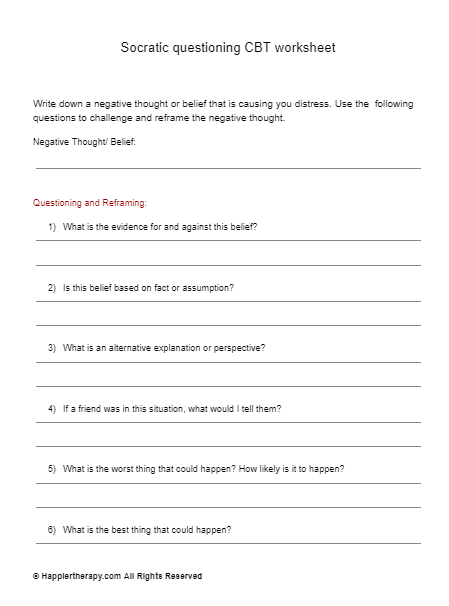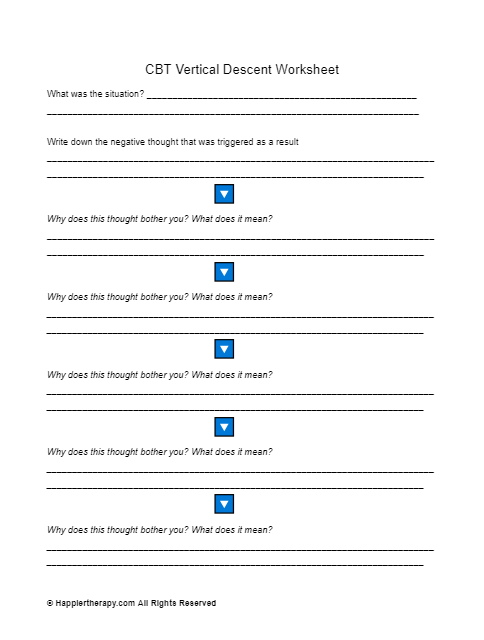EATING DISORDER CBT WORKSHEET
An eating disorder is a pathological disturbance of attitudes and behaviors related to food that can negatively impact your health. The most common eating disorders are anorexia nervosa, bulimia nervosa, and binge-eating disorder.
Most eating disorders will develop in teens and young adults but can also develop at other stages. Pica and rumination are other eating-related disorders usually diagnosed in infancy or early childhood.
Cognitive-behavioral therapy (CBT) is the leading evidence-based treatment for eating disorders.
What Are The Theories Behind This Worksheet?
CBT is a type of psychotherapy that helps patients identify links between their thoughts, feelings, and behaviors to overcome unhelpful thinking patterns and modify behaviors.
Enhanced cognitive behavior therapy (CBT-E) is the most effective treatment for eating disorders. It is a “transdiagnostic treatment for all eating disorders including anorexia nervosa, bulimia nervosa, binge eating disorders, and other specified feeding eating disorders (OSFED).
CBT-E is a highly individualized treatment where patients have their specific version of CBT-E to match their eating disorder. CBT-E follows a series of 4 stages;
- Stage one focuses on understanding the individual’s eating disorder, underlying contributing factors, and the beginning to establish regular eating patterns.
- Stage two involves planning for the treatment based on the individual’s eating disorder.
- Stage three focuses on the processes for maintaining the person’s eating disorder.
- Stage four looks at setting up future success by developing strategies to prevent relapse.
How Will This Worksheet Help You?
This worksheet will help patients create their own individualized CBT-E plan tailored to their specific eating disorders and needs.
Additionally, patients can identify their underlying unhelpful thoughts and feelings and develop strategies to help with the change.
How Should You Use This Worksheet?
This worksheet should be used as a collaboration between a therapist and a patient to identify one’s eating disorder, develop a plan for treatment and work towards developing strategies to prevent relapse.
Moreover, you can also use this worksheet as a self-evaluation tool to help you identify and address your eating disorder symptoms and minimize the risk of relapse.
Was this helpful?
References
1.-
American Psychiatric Association. (© 2023). What are Eating Disorders? Available at: https://www.psychiatry.org/patients-families/eating-disorders/what-are-eating-disorders. [Accessed February 15, 2023]
2.-
Body Whys: The Eating Disorder Association of Ireland. (© 2023). Understanding CBT-E: Cognitive Behavioral Therapy-Enhanced. Available at: https://www.bodywhys.ie/treatment-pathway/cbt-e-cognitive-behavioural-therapy-enhanced/. [Accessed February 17, 2023]
3.-
CBT-E. (© 2023). A Description of CBT-E. Available at: https://www.cbte.co/what-is-cbte/a-description-of-cbt-e/. [Accessed February 17, 2023]
4.-
Eating Disorder Victoria. (No Date). Cognitive Behavior Therapy for Eating Disorders. Available at: https://www.eatingdisorders.org.au/wp-content/uploads/2021/03/Cognitive-behaviour-therapy-for-eating-disorders.pdf. [Accessed February 17, 2023]

 By
By



